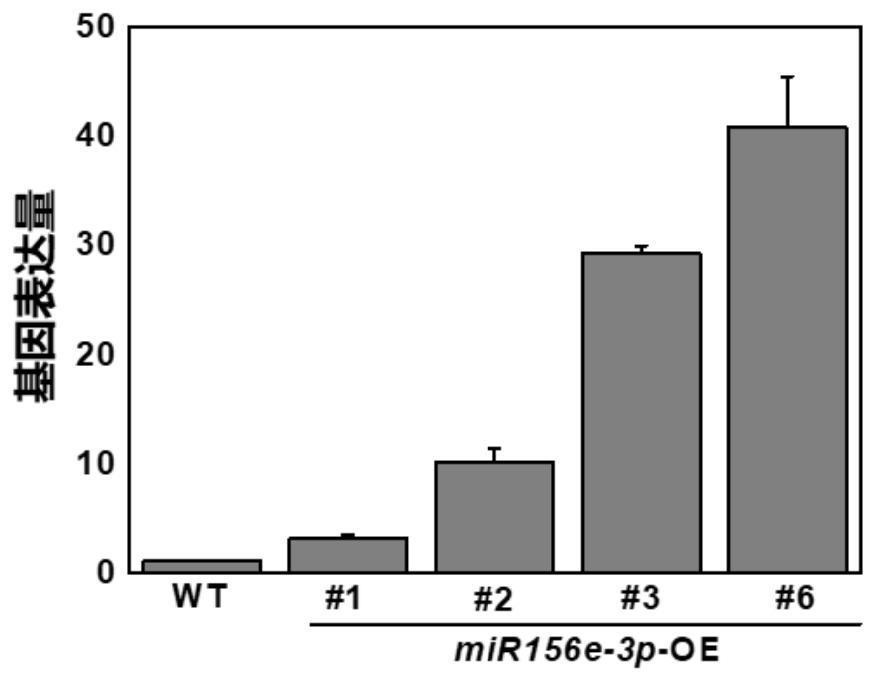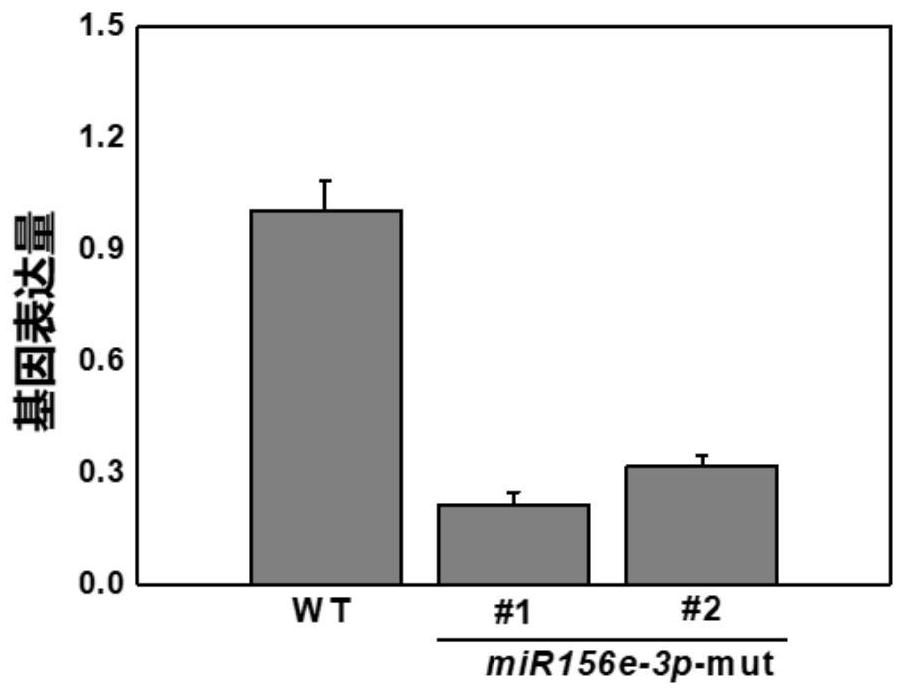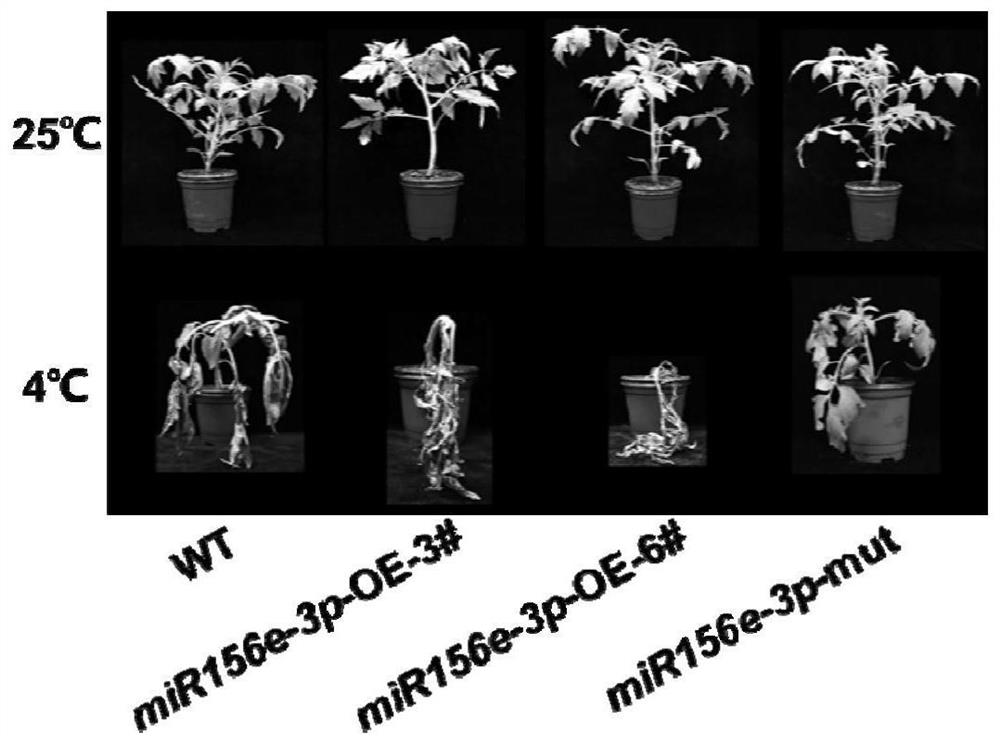Application of tomato mir156e-3p gene in improving tomato low temperature resistance and plant overexpression vector
An overexpression vector, tomato technology, applied to the application of tomato miR156e-3p gene in improving low temperature resistance of tomato, in the field of plant overexpression vector, can solve the problems affecting tomato yield, etc., to improve tomato low temperature resistance, low temperature resistance sex-reducing effect
- Summary
- Abstract
- Description
- Claims
- Application Information
AI Technical Summary
Problems solved by technology
Method used
Image
Examples
Embodiment 1
[0026] Example 1: Construction of miR156e-3p gene overexpression vector
[0027] To understand the molecular mechanism of plant response to low temperature, the miR156e-3p precursor sequence was cloned from the tomato genome. According to the sequence analysis of the coding region, design specific primers pre-F and pre-R, and respectively add restriction enzyme sites (Asc I and BamH I) on the primers, the sequences are shown in SEQ ID NO.3 and 4 . The DNA fragment of the miR156e-3p precursor sequence was amplified by PrimerSTAR high-fidelity enzyme PCR, and then the PCR amplified fragment and the vector were digested, and the precursor sequence was connected to pFGC1008-HA to obtain an overexpression vector. The recombinant plasmid was sequenced and confirmed, and the obtained gene miR156e-3p precursor nucleotide sequence is shown in SEQ ID No.2. The results showed that the cloned sequence was consistent with the published sequence (MI0029110) in miRBase.
Embodiment 2
[0028] Example 2: Construction of miR156e-3p gene interference vector
[0029] Short tandem target mimic Short tandem target mimic (STTM), which effectively reduces the activity of endogenous microRNA by simulating the target, is a powerful tool for studying endogenous microRNA. Specific primers tgt-F and tgt-R were designed using STTM technology, and a restriction enzyme cutting site Eco31I (BsaI) was added to the primers respectively, and the sequences are shown in SEQ ID NO.5 and 6. Use PrimerSTAR high-fidelity enzyme PCR amplification to recover a 100bp electrophoresis fragment, then digest the PCR amplified fragment, and connect it to the Eco31I (BsaI) restriction site of the pBWA(V)HS-amiRNA vector. The above recombinant plasmids were sequenced and confirmed.
Embodiment 3
[0030] Example 3: Construction and detection of tomato miR156e-3p gene overexpression and silenced plants
[0031] The overexpression vector pFGC1008::miR156e-3p-HA and the gene interference vector pBWA(V)HS-amiRNA(miR156e-3p) were transformed into Agrobacterium GV3101, and tomato cotyledons were infected to induce callus and induce differentiation of resistance And rooting culture, obtain tissue culture seedling, carry out the test of chloramphenicol resistance and kanamycin resistance respectively to T2 generation overexpression seed and silent seed, select 3 / 4 to have resistance and remaining 1 / 4 has no resistance The strain indicates that the overexpression vector or interference vector of the target gene is connected in the strain and inserted in a single copy form. These plants were removed and harvested individually.
[0032] Positive plants for overexpression and gene silencing were verified by qRT-PCR technology. The results showed that 4 lines were detected in the ...
PUM
 Login to View More
Login to View More Abstract
Description
Claims
Application Information
 Login to View More
Login to View More - R&D
- Intellectual Property
- Life Sciences
- Materials
- Tech Scout
- Unparalleled Data Quality
- Higher Quality Content
- 60% Fewer Hallucinations
Browse by: Latest US Patents, China's latest patents, Technical Efficacy Thesaurus, Application Domain, Technology Topic, Popular Technical Reports.
© 2025 PatSnap. All rights reserved.Legal|Privacy policy|Modern Slavery Act Transparency Statement|Sitemap|About US| Contact US: help@patsnap.com



